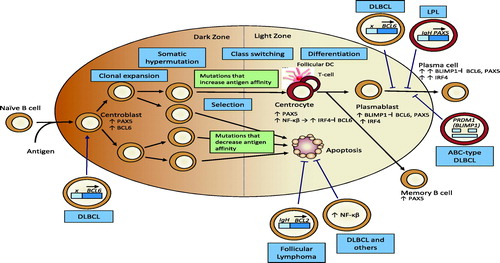Figures & data
Table 1. Lymphoma risk in individuals with primary immunodeficiencies.
Table 2. Relative risk (as odds ratios with 95% confidence intervals) of non-Hodgkin’s lymphoma cancer (and sub-types) in individuals with autoimmunity compared to the general population.
Table 3. Relative risk (as standardized incidence ratios (95% confidence intervals)) of malignancies in patients with rheumatoid arthritis.
Table 4. EBV differentially contributes to lymphoma burden across patient populations.

